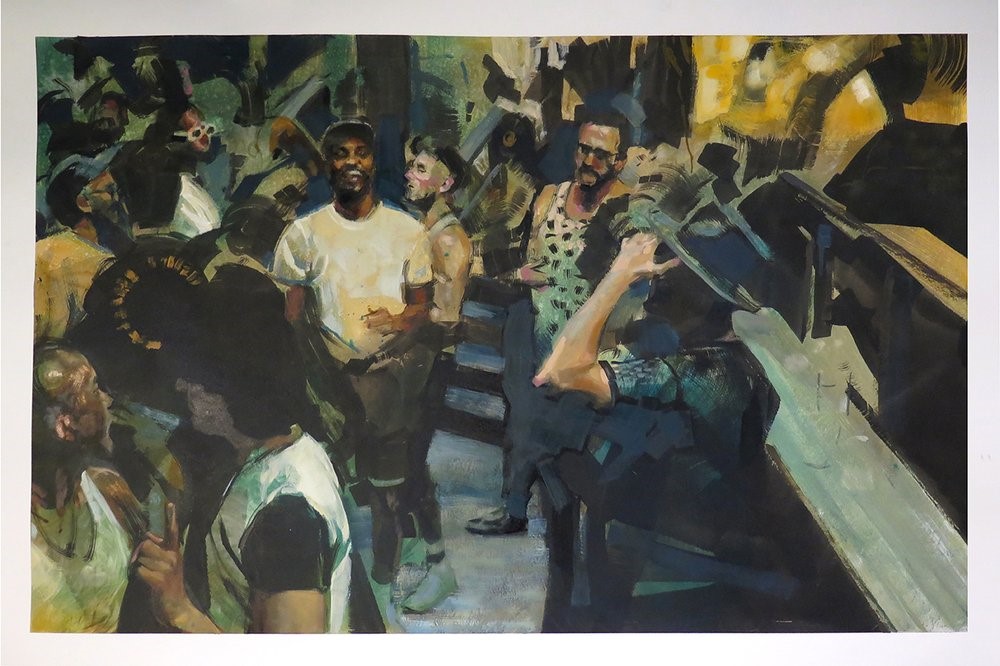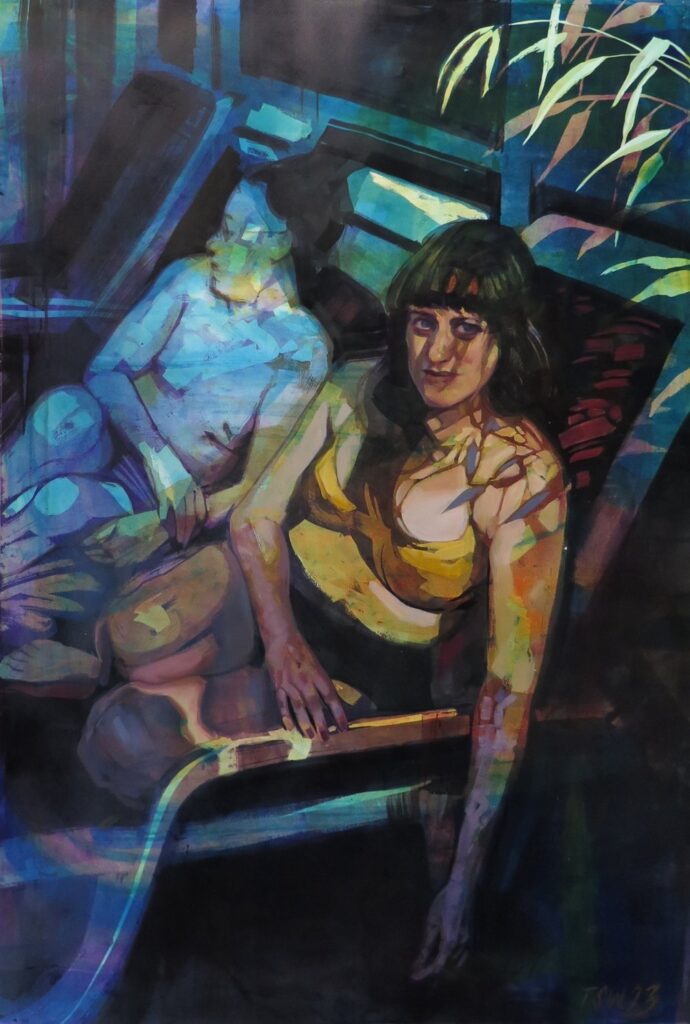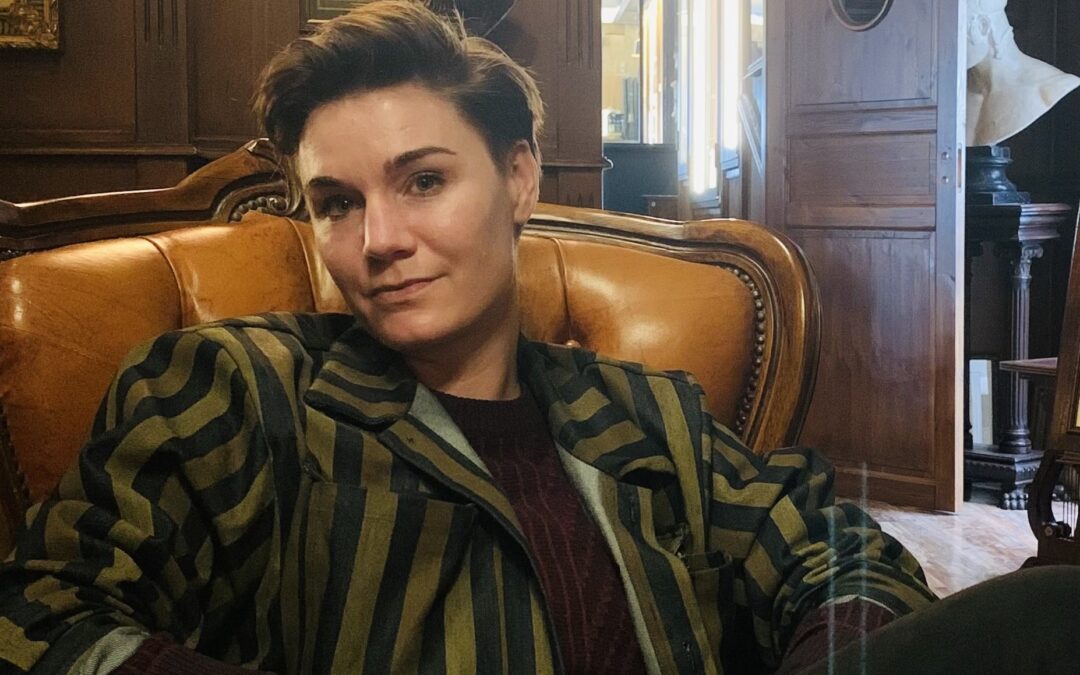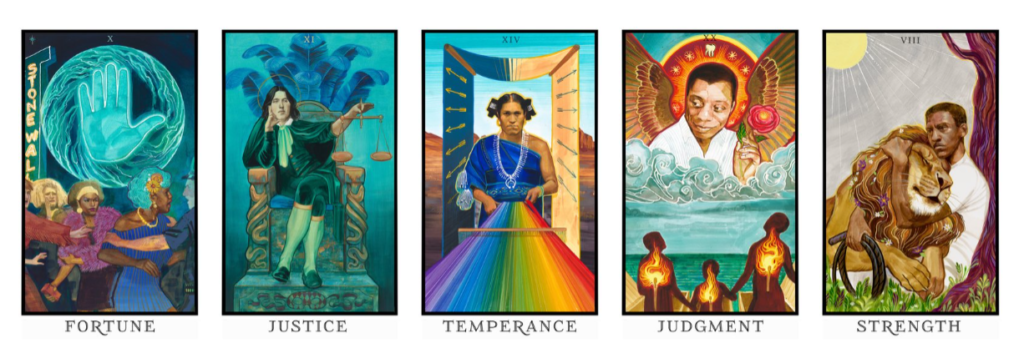Growing up in Bernal Heights, how has San Francisco’s artistic and queer culture shaped your development as an artist and influenced the themes you explore in your work?
San Francisco was a landscape saturated with art, especially as a kid. My experience of artwork, because of the scale and variety of what was publicly accessible via murals, street art, tagging, and public works, was that Art’s nature is to be publicly beneficial, an expression of culture. Of course, I went to museums and galleries; my mom liked to take me when I was a child into my teens, but the day-to-day experience of having artful surroundings informed my philosophies around art in the long term. It was only last year that I got my driver’s license because public transportation has been so accessible in the city. This relates very much to my experience of art and queer culture because, as a young person and as a teenager, I could travel all over the city by bus, and find people, find art, and find community. Seeing it through a bus window is much like seeing it in a frame. My sexuality and my creativity felt very intertwined emotionally. I volunteered for the Lyric Youth Hotline and illustrated their outreach stickers. I would take the 24 from Cortland Street to the Castro and Haight Street and stare at the window displays, which was Art! Friends of the family who were drag queens would let me try on their enormous wigs and admire their costumes, and that was Art. My dad used to take me downtown when bands played on the sidewalk, and that was Art. My mom would take me to the Legion of Honor, and that was Art. In Bernal Heights alone, so many artists live here that talking about drawing, painting, or making was normalized in a way that elevated creative expression to an important routine, like completing an education or maintaining friendships. Art and identity blended, one fueling the other, in a city that contained the village of Bernal (small, safe, and contained) but also gave room to breathe, explore, and expand.

“Titania” – Tanya Wischerath
You’ve described the artwork as “an offspring of the compulsive need to make.” When did you first recognize this creative compulsion in yourself, and how has it manifested across different mediums – from painting to tattooing to songwriting?
The compulsion to express is universal; all children are creative geniuses in some form or another, but through persistent discouragement from capitalism, from parents, from educational systems ( both explicit and indirect), most people close the line of communication connecting their interior worlds to the practice of manifesting those worlds outwardly because art making was so normalized and so encouraged by the landscape of the city itself and my family (both of my two brothers are exceptional artists in their own right), the thought that I would do anything else but Make never crossed my mind.
Your biographical portraits are created to preserve the vibrancy and beauty of your community. Could you share a particular portrait with special meaning for you and the story behind capturing that person’s essence?
I have a relatively small painting that I did of my partner bathing. My partner is trans & nonbinary, making every piece of anti-trans legislation passed or proposed a very real and deeply personal attack on our lives. While externally, we are bombarded with sensationalizing and often vilifying depictions of transness, in our home, we are simply two people in love, doing the kind of domestic rituals that any couple might. Watching my partner take a bath, the arch of the tub becomes a halo, their body an allegory, and the banal domestic moment becomes a spiritual one. I painted this portrait of my spouse because reverence and familiarity are laterals on the spectrum of intimacy, and dualities are feelings experienced by most couples, regardless of gender or sexuality. I hoped that the relatability of this dynamic would encourage viewers to recognize more fully the humanity of those whose intimate lives do not, at first glance, resemble their own: an agenda of self-reflection and awareness of the very human desire to be both seen and adored, just as we are.

The Opening – Tanya Wischerath
In illustrating The Modern Queer Tarot, you used two distinct techniques – hand-painted acrylic gouache for the Major Arcana and digital illustration for the Minor Arcana. What influenced this artistic decision, and how did each medium serve the different aspects of the deck?
The major arcana needed to be hand-painted because the magical properties of objects are connected to the labor of creating them, the tension between the imagined outcome, and the unique will of the materials used. Painting those 22 illustrations by hand took a year and a half for time and uniformity. It was simply impractical to do the minor arcana in the same way. Additionally, compared to the major arcana, which has high stakes and usually impactful archetypal events, the minor arcana describes smaller, more day-to-day experiences and emotions, which aligned with using Procreate, which is my day-to-day practical drawing tool.
The Modern Queer Tarot features historical queer figures and events. Was there a particular card or historical figure that resonated deeply with you during the illustration process, and why?
The Card of the Moon, featuring Tennessee Williams. I loved how this card turned out, as well as the colors and the atmosphere. As an artist, I resonated with the imagery that one’s creations always reflect oneself, regardless of how they appear topically unrelated. It makes me think of a quote by Walt Whitman (who incidentally is the empress in the tarot deck): “Do I contradict myself? Very well, then, I contradict myself. I am large. I contain multitudes.”
With The Modern Queer Tarot being completed in 2024 and the upcoming showcase at Illusions Gallery, what aspects of this project are you most excited to share with the public, and what do you hope people take away from experiencing this work?
My favorite part of centering real people in this deck is how clear it is that we occupy the role of every possible kind of character in the story of our own lives. We are villains and heroes, the makers of chaos, the bringers of order, and everything in between. I think every person who has experienced being marginalized has also had the experience of feeling that they have to prove their worth as human beings to be good enough to justify the space they take up. This binary of good and bad is destructive to honesty. I love that this deck does not feed into some sanitized heroic underdog trope. Queer history contains multitudes, and every identity is made up of innumerable moving parts, each with its own wisdom and unique expression. I love that this deck is rooted in fact by being historically informative while ultimately being a tool of divination whose messages are subjective and personal to the reader. I hope people take from this deck the notion that it is better to be true than “good.”

Nuala – Tanya Wischerath
Your work often serves as a celebration of community. How has your relationship with San Francisco’s artistic and queer communities evolved over the years, and how does it continue to inspire your creative practice?
My relationship with the queer community has evolved from being deeply embedded in these spaces to describing them as memories. I’ve gone from being a constant figure in queer nightlife—first as a bartender at the Lexington Club, the last lesbian bar in San Francisco, and now as a patron of the few remaining queer bars—to looking back on these places as symbols of a time and community I feel slipping away. These spaces were, and still are, sanctuaries where queer and trans folks could be themselves without fear of judgment, where our bodies and desires were embraced and celebrated. In painting these spaces and the people within them, I embroider my experiences into broader cultural narratives. In depicting queer spaces and culture, I can explore the intersections of class, gender, race, and sexuality, the complexity and richness of queer identity. Choosing tangible materials like paper, paint, and ink feels essential to capturing the truth of these experiences; they bring a raw, physical quality that digital media lacks. This choice preserves an authentic voice that resists social media’s polished, curated, and often falsified nature, which dominates how most of us tell our stories today. I want to honor spaces and the communities they’ve cultivated, but as I get older, I wish for more gathering places that don’t center around alcohol. When I used to draw bar scenes in my 20s, alcohol was so romantic. Looking back on these drawings at 40, they have a little desperation. Like I’m chasing fun, but it’s never still long enough. By capturing these memories, I’m not only documenting a personal history but also paying tribute to the spirit of queer spaces—places that we still need in diverse forms for connection, support, and celebration.
As someone who creates across many mediums, how do you decide which form of expression best suits a particular idea or emotion you want to convey?
The medium is the message. Art making is comparable to animal training in that there are those in the camp who would break the spirit of something wild and crush it into submission so that it becomes a vessel for their own will. Others value the qualities of a creature and aim to guide its actions through encouragement and relationships. Your relationship with your materials is much the same; are you trying to dominate or encourage the unique qualities of your materials? Of course, I have veins of curiosity that I follow reoccurring themes, but the outcome of the work is so much more dynamic and exciting when the materials guide the process.
When creating birthday songs for friends, how do you capture someone’s essence in musical form? How does this creative process differ from or complement your visual art?
It’s a very Danish thing to write people songs on their birthdays, big round birthdays especially, so this is a thing my brothers and I have been doing for most of our lives. The sentiment varies by occasion, but generally, I like to capture a person’s essence by thinking about a sentiment, phrase, or theme that comes up constantly for them and then very lovingly teasing them about it in the form of a biographical ballad. Writing songs for people doesn’t feel much like any other kind of art that I do, except that all of my portraits and figurative work aim to glorify the subject. So, too, I hope my songs make the recipient feel both authentically seen and epically glorified.
Learn more about Tanya at her website: https://www.tanyawischerath.com/


